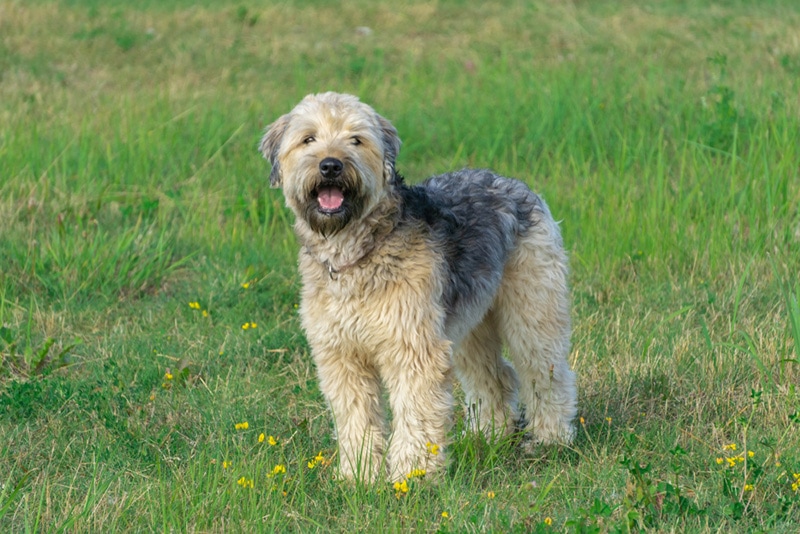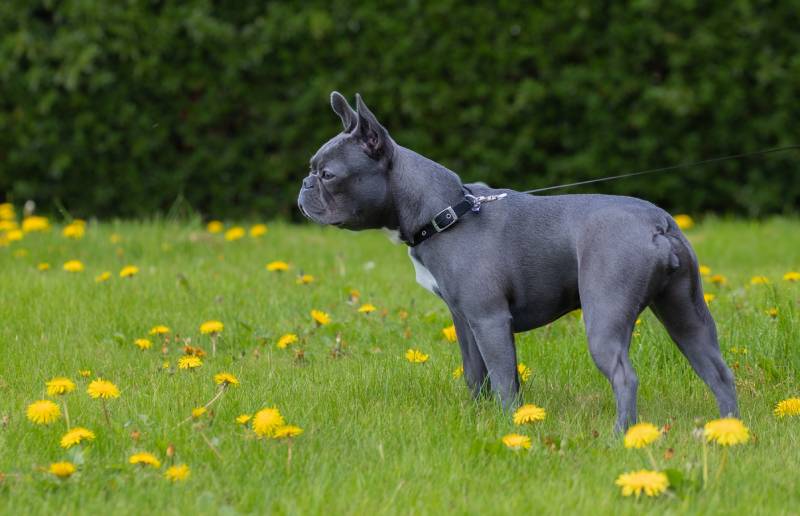How To Stop a Herding Dog From Nipping: 8 Tips & Tricks

Updated on
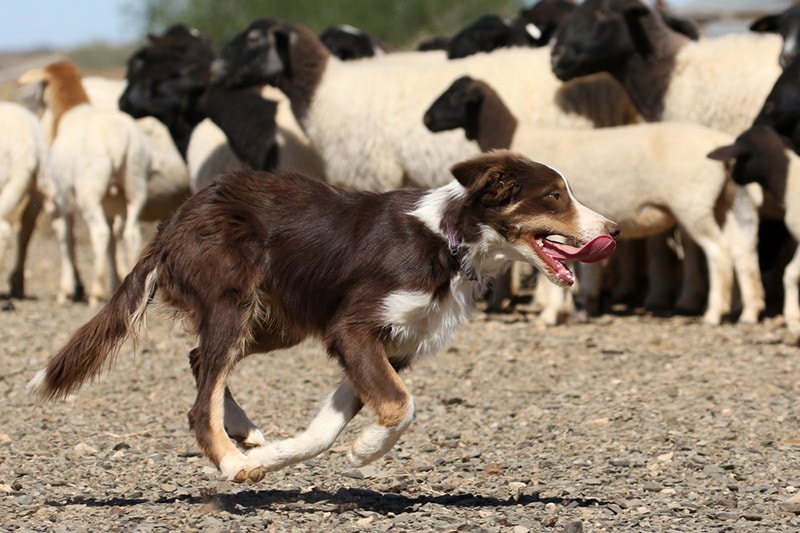
Herding dogs almost always carry a superior intelligence, trainability, and temperament that can lull you into a false sense of security. Their learning skills are fortunate because you’ll have plenty of undesirable behaviors to iron out. The qualities that make these dogs great in the field don’t translate well to family life, and you’ll see that immediately once the nipping starts.
Nipping and biting behaviors are automatic in almost all herding breeds, from Collies to Corgis. If your new pet has trouble controlling their compulsions at the worst possible times, check out these eight tips and tricks to stop herding dogs from nipping.
The 8 Tips & Tricks to Stop a Herding Dog From Nipping
1. Dial In the Basic Commands
Any dog, whether herding or not, should have a few basic commands under their belt. When it comes time to train out those unwanted herding and nipping habits, they’ll be some of your most effective aids in setting your dog up for success.
Teaching the “come” command will build recall and help you catch your dog the second they try to nip. Having your dog “sit” or stay in place will calm and focus them while you train out their nipping behavior in a controlled setting. Teaching specific commands will help you snuff out the herding habit, but in general, training your dog will push them to control their instinctual urges.
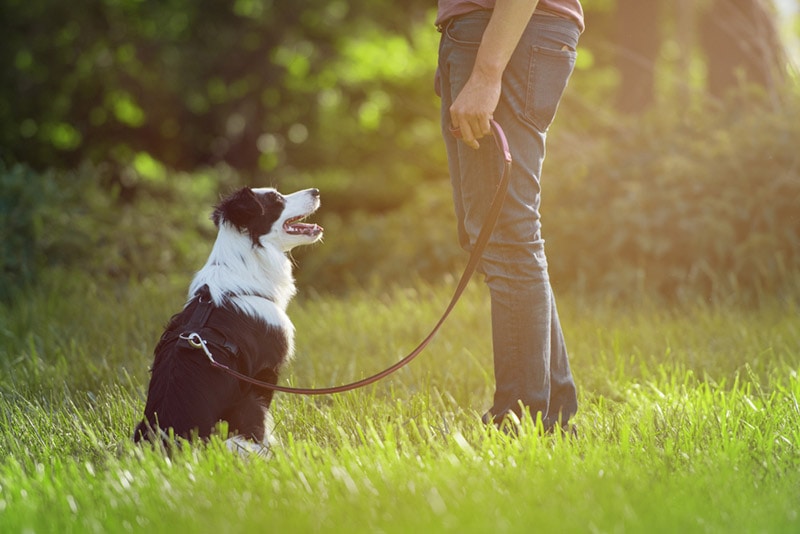
2. Watch for Nipping Cues
Redirecting your dog before they can engage in nipping behavior will facilitate the training process. You want to make your dog comfortable around the stimuli and reward the desired response rather than reel them back in as they take off running.
Identifying the behaviors that engage their herding response and the cues they offer before giving chase will allow you to jump in earlier and take away any chance of your dog acting on instinct. Kids running and roughhousing are some of the most common triggers. Or, maybe your dog jumps at the sight of cyclists and cars.
Once you understand the distractions that create the response, you can look for signals that your dog will start running. Are they lowering their body? Is their gaze fixed on their flock (i.e., your children)? Do they bark or grunt before taking off? Once you know the cues, you can step in to stop what comes next.
3. Train Slowly and Gradually Ramp Up the Pace
Training a herding dog not to nip will typically require dedicated counter-conditioning sessions. Each should be 15–20 minutes long and performed when your dog is calm and relaxed. Keep them on a leash with plenty of slack, and have treats handy to reward their actions (or, in this case, lack thereof).
While your dog is by your side following your sit or stay command, another person will perform the action that inspires the nipping urge. It could be vigorous movement in the yard or riding a bike down the sidewalk. Whatever the case, start slowly and gradually increase your intensity as your dog gets used to staying calm.
Have your dog look at the person running, playing, or performing that motion that gets a response. Reward them with treats as they sit still and focus on the stimulus. Start by having the person walk and eventually build up to full-speed running. Going slow will make it easier for your dog to resist the urge to herd.
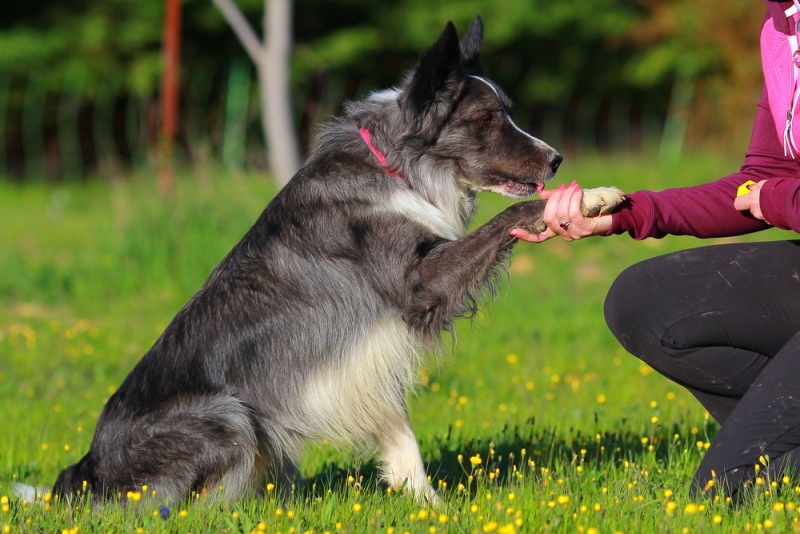
4. Keep Dogs and Stimuli Under Your Control
Unless you’re performing a controlled training session, don’t put your dog in a position to engage in herding and nipping. You may have to keep the dog inside while the kids play outdoors or keep them leashed in the house around others. Stopping any chance to nip is crucial for everyone’s safety and helping you turn the behavior around.
Consistency is critical when training out a reflex cultivated over generations. Unless you train your kids, they may send the wrong signals when your dog’s herding instinct kicks in, like making it seem fun. The opposing messages could confuse your dog during a training session. By limiting herding opportunities to situations under your control, you can ensure your dog gets feedback that solidifies your teachings.
5. Keep a Toy on Hand to Redirect
When you’re in a non-training situation, such as walking your dog or hanging out at the park, a favorite toy is a handy tool to keep your dog focused in a positive direction. Pull out the toy and get their attention if they start showing signs of herding. Tug-of-war ropes are ideal, allowing you to keep your pup intent on you. The moment will pass, and you won’t have to resort to the leash to maintain control.
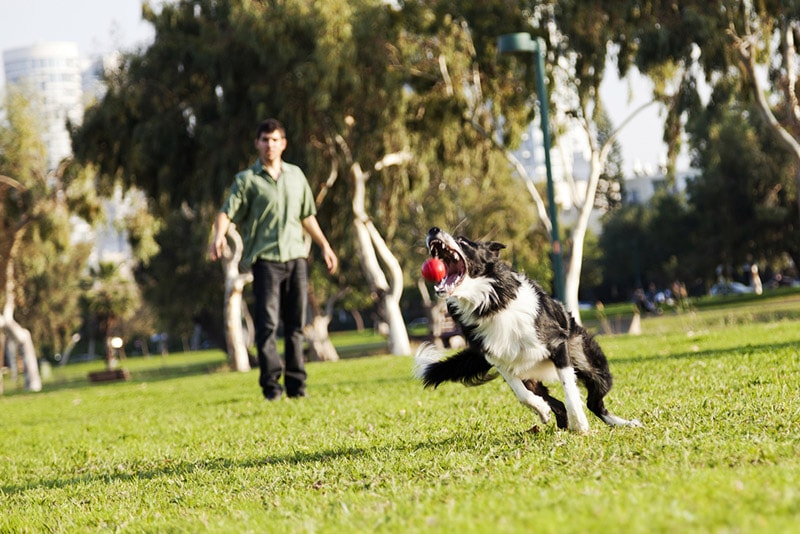
6. Ignore the Behavior When It Happens
Your dog will sometimes get the chance to engage their herding urge. When this happens, your response is crucial. Pulling away or reacting fast could make your dog think it’s a game, encouraging the behavior.
Instead of responding, stop moving and ignore your dog. When they quit nipping, you can reward them with attention and treats. Getting everyone in the family on the same page with this technique will prevent your dog from building positive associations with nipping.
7. Socialize Your Dog
Helping your dog overcome their impulses often takes exposure to unique situations, people, and pets. Playing with other dogs can show them alternative ways to interact that don’t involve herding, and you get novel opportunities to train.
Reinforcing good behaviors across a range of contexts will promote better decision-making. At the same time, sound social health leads to calmer, friendlier personalities.
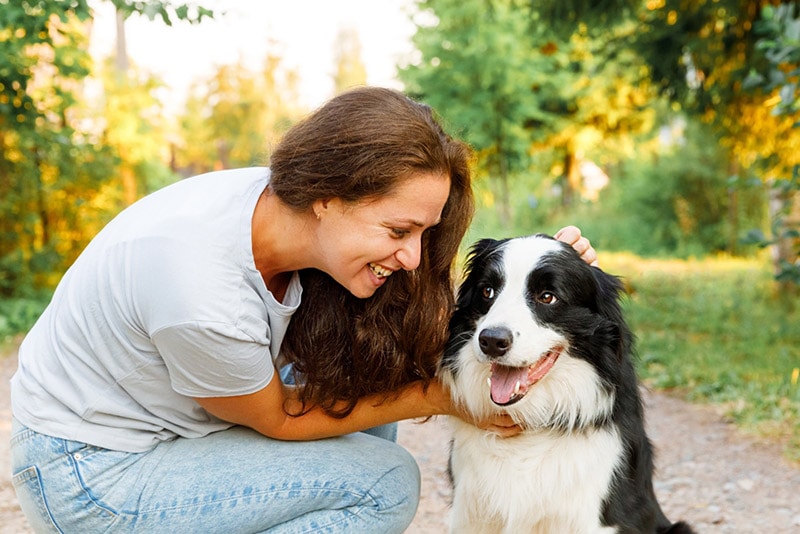
8. Be Patient and Continue Reinforcement
Reliable restraint takes time and effort to ingrain in a herding dog. They won’t get it immediately, and you can’t try to throw too much at them too quickly. Daily exercises over several weeks will be necessary, but frequent reinforcement never ends. Old habits die hard, and they don’t get much older than a herding dog’s instinct to nip.
Conclusion
Herding behavior can be unexpected and even a little scary for young children, guests, and others. Dogs aren’t trying to threaten or hurt. When they see action, they think it’s on them to restore order. Rather than punishment, they need redirection, a chance to take that drive and direct it in a more family-friendly direction. Stay positive and patient, and try these tips and tricks to nip the nipping problem for good!
Featured Image Credit: Peter Mullineux, Shutterstock


